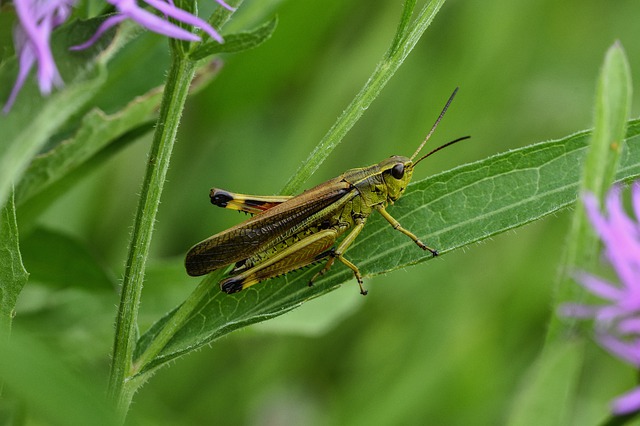Beginning in June 1874, a swarm of grasshoppers dense enough to block the sun’s rays – so copious that you could scoop them up with shovels – descended on the drought-ravaged Great Plains. They mowed down crops and brought economic devastation to entire communities. In a scene eerily familiar, the chewing herbivorous insects, a close cousin of the locust, did it again in 1931 in regions suffering from prolonged periods of below normal rainfall.
No one is predicting a return of the grasshopper, although that seems a haunting title for an apocalyptic movie. But history does warn us of the dangers of extreme drought, when grasshoppers can flourish and when turfgrasses are most vulnerable. As we move into the summer months, when rainfall is scarce in many parts of the United States, golf courses and sports facilities are reminded that they must manage water usage and consumption diligently.
Audubon International, which promotes sustainability for businesses, recreational properties and communities, is committed to bringing solutions to golf and sports facilities. “Putting your golf course, community or resort on the path to sustainability may seem overwhelming, but it doesn’t have to be,” Audubon International CEO Christine Kane says. “We suggest starting by establishing an environmental policy that will guide your operations. This will bring your employees and members onboard and pave the way for incorporating topics such as water conservation, IPM or wildlife management into your budget, marketing and maintenance processes.”
Golf facilities and clubs also benefit from sustainability’s halo effect. Many members today expect greater levels of environmental stewardship from businesses and other organizations with which they are associated. In addition to its environmental impacts, sound water management has taken on a good-for-business shine as well.
Research points out that sound environmental stewardship matters to women and millennials especially.
Eighty-three percent of U.S. women believe that climate change is a serious problem, according to a 2015 Pew Research Center study. Nearly 70 percent of the women polled worry that such changes will affect them personally. The bottom line is that women are concerned about sound environmental practices and are receptive to learning how golf course managers are caring for Mother Earth.
Pew further reports that drought is among the top four climate-related concerns. “Fully half of Americans name drought as their chief climate change concern, and this is especially true in drought-plagued Western states compared with other regions of the country,” according to the research.
Clubs and courses seeking to attract younger members would do well to take a responsible approach to environmentalism. “Brands that establish a reputation for environmental stewardship among today’s youngest consumers have an opportunity to not only grow market share, but build loyalty among the power-spending millennials of tomorrow,” says Grace Farraj, an executive with Nielsen Environmentalism.
Audubon International launched its Water & Sustainability Innovation Award this year to recognize landscape companies, organizations and municipalities for sustainable, water-efficient projects. Corica Park South Course of Alameda, California, and its management firm, Greenway Golf, was the first recipient.
The Audubon Cooperative Sanctuary Program for Golf provides a tangible form of recognition for clubs and courses committed to protecting the environment and preserving the natural heritage of the game. By helping people enhance the valuable natural areas and wildlife habitats that golf courses provide, improve efficiency and minimize potentially harmful impacts of golf course operations, the program serves an important environmental role worldwide.
Audubon International also has developed Standard Environmental Management Practices that are generally applicable to all golf courses. These standards form the basis for the Audubon Cooperative Sanctuary Program for golf certification guidelines. Points of focus from the ACSP for golf facilities include habitat planning and management guidance, which educates club members and other golfers while increasing the understanding of best management practices for pesticide use.
This article was authored by GGA Partner Henry DeLozier for Golf Course Industry Magazine.


